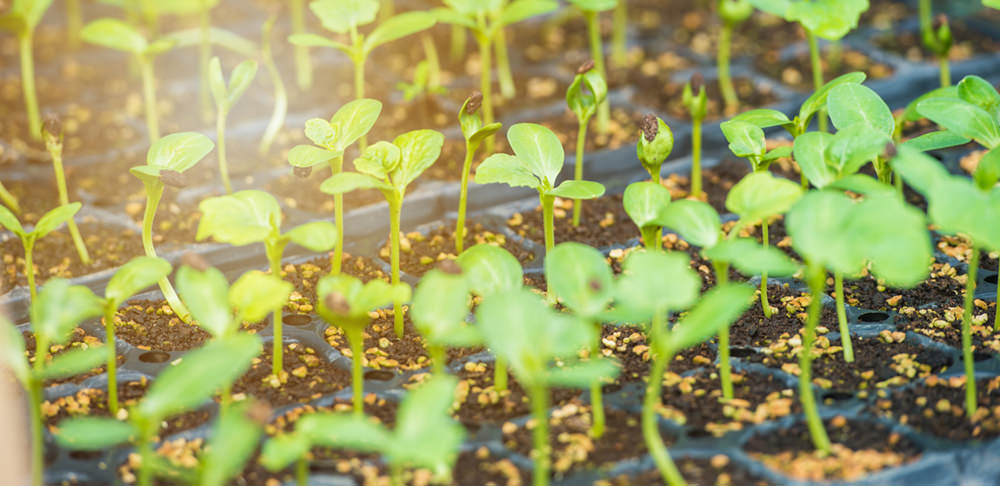Dynamic LED Lighting vs. Natural Sunlight: Pros and Cons
Light is one of the most important factors for plant growth and development. Plants use light to perform photosynthesis, the process of converting light energy into chemical energy that fuels their metabolism. However, plants can respond differently in terms of their morphology, physiology, and biochemistry, depending on the spectrum, intensity, and duration. The choice of lighting systems plays a pivotal role in the successful cultivation of plants. Two primary contenders in this arena are dynamic LED lighting and natural sunlight. In this article, we will compare and contrast dynamic LED lighting and natural sunlight. By weighting the pros and cons, you can make an informed decision that aligns with your specific horticultural goals, space availability, and budget considerations.
Natural sunlight in horticulture
When it comes to horticulture, natural sunlight has long been the primary source of light for plants. The sun’s full spectrum of light provides a range of benefits that contribute to healthy plant growth and development. However, sunlight also has some limitations and challenges for horticulture, especially in indoor or controlled environments.
Pros
Full spectrum of light: Natural sunlight provides a complete spectrum of light that encompasses all wavelengths, including ultraviolet (UV) and infrared (IR) radiation. This full spectrum enables plants to undergo essential processes such as photosynthesis, resulting in robust growth and the production of vital nutrients.
Cost-effective: Harnessing natural sunlight eliminates the need for artificial lighting systems, reducing energy costs for horticulturists. Utilizing sunlight as the primary light source can be a more economical option, especially for outdoor gardens or greenhouses that have ample access to natural light.
Natural variations: Sunlight provides natural variations in light intensity and duration, such as day/light cycles, seasons, and weather conditions. These variations help regulate the plant’s circadian rhythm, flowering, dormancy, and other processes.

Cons
Limited control: Unlike LED grow lights, natural sunlight cannot be controlled or adjusted to suit specific plant requirements. The intensity and duration of sunlight are subject to natural fluctuations, which may not always align with the optimal conditions needed for certain plant species or growth stages.
Environmental constraints: Relying on natural sunlight can introduce environmental constraints that are beyond human control. Factors like cloudy days, pollution, and shading from nearby structures or vegetation can limit the amount of sunlight reaching plants. These constraints can impact plant growth and yield potential.
Geographic limitations: The availability of direct sunlight varies depending on the geographical location and the orientation of the garden. Areas with limited sunlight or those situated in densely populated urban environments may face challenges in harnessing natural sunlight effectively.
Understanding dynamic LED lighting
Dynamic LED lighting has become incredibly popular in indoor gardening and commercial horticulture in recent years. It is a type of LED lighting system that can change its color, intensity, and duration according to the needs and preferences of the grower. This advanced technology offers a range of benefits that cater to the specific needs of plants, allowing for optimized growth and enhanced productivity.
Pros
Customizable light spectrum: One of the key advantages of dynamic LED lighting is its ability to provide a customizable light spectrum. LED lights can be programmed to emit specific wavelengths of light, allowing growers to tailor the lighting conditions to match the precise requirements of different plant species at various growth stages. The customization enables improved yields and quality.
Energy efficiency: Dynamic LED lighting systems are highly energy-efficient compared to traditional light sources. LEDs consume significantly less electricity while producing the same or even higher light output. It can not only reduce energy costs but also minimize the environmental impact associated with indoor growing.
Heat management: Unlike conventional lighting options, dynamic LED lighting generates less heat. This characteristic is particularly beneficial for indoor cultivation, as excessive heat can damage plants. LED lights produce less heat, allowing growers to position the lights closer to the plants without risking heat stress.

Cons
Initial investment: The upfront costs of installing dynamic LED lighting systems can be higher compared to traditional lighting options. However, it is important to consider the long-term benefits and cost savings associated with energy efficiency, reduced maintenance, and improved yields when evaluating the investment.
Expertise requirement: Designing and implementing dynamic LED lighting systems requires a certain level of expertise. Growers need to understand light spectra, intensity, and duration, as well as the specific requirements of plants, to create optimal lighting conditions. Acquiring the necessary knowledge or working with experienced horticulture lighting professionals may be necessary to maximize the benefits of dynamic LED lighting.
Potential for light saturation: High-intensity LED setups can potentially lead to light saturation, where plants receive more light than they can effectively utilize. This can result in diminished growth or even damage to the plants. It is crucial to carefully monitor and adjust the light intensity to avoid overexposure and optimize plant development.
Dynamic LED lighting vs. natural sunlight
Both dynamic LED systems and natural sunlight have distinct advantages and disadvantages. LED fixtures give you unparalleled control over the light spectrum, intensity, and timing to optimize plant development. Ultimately, the ideal lighting solution depends on the specifics of your horticulture operation and goals. For commercial-scale indoor farms and greenhouses requiring high yields and year-round productions, the consistency and customization of dynamic LED lighting make it the primary choice. Greenhouse growers can leverage more natural light while using supplemental LED lighting to fill in gaps.
As LED technology continues advancing, it may someday match all the benefits of natural light. Let us know if you have any questions about implementing dynamic LED lighting for your unique needs.

